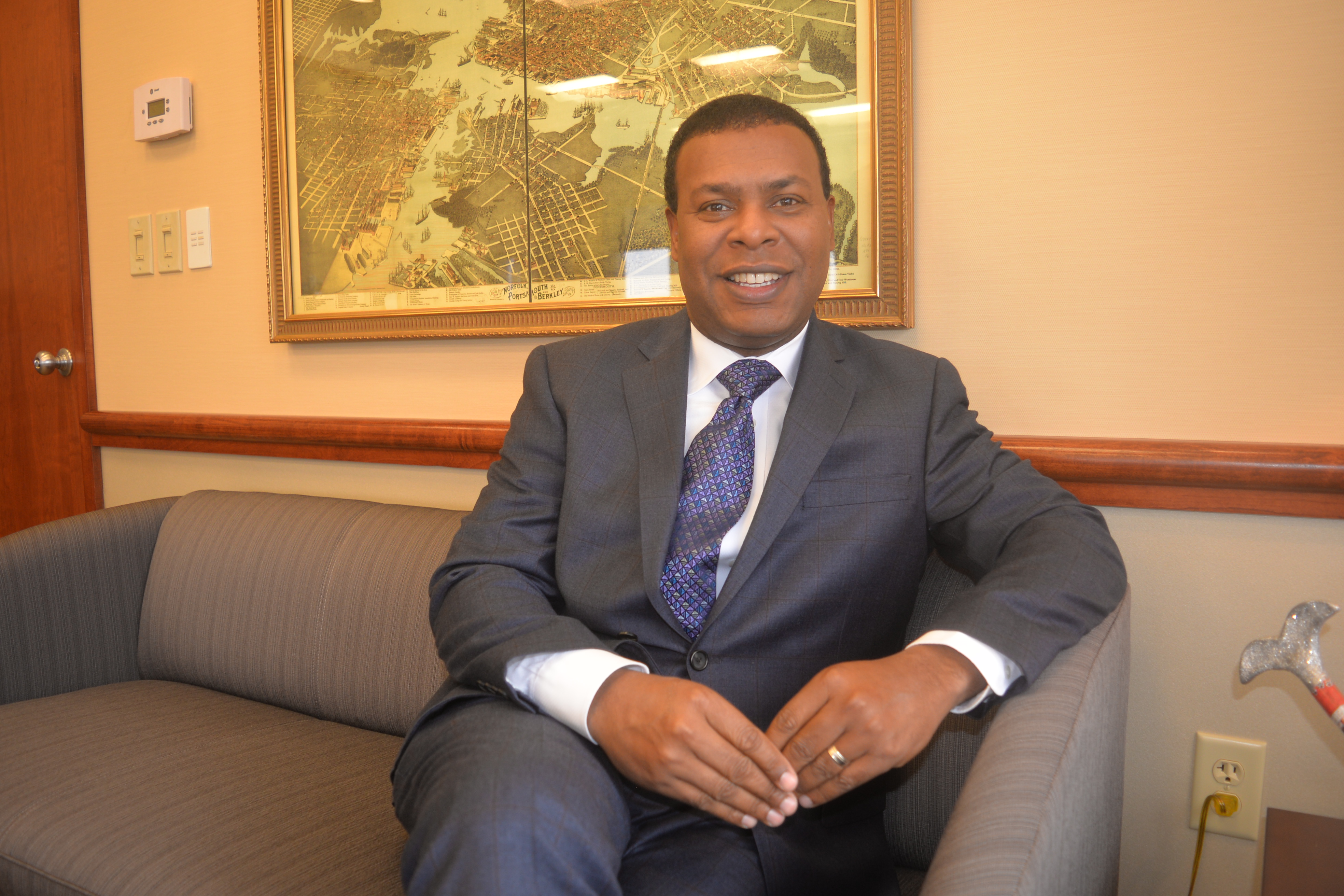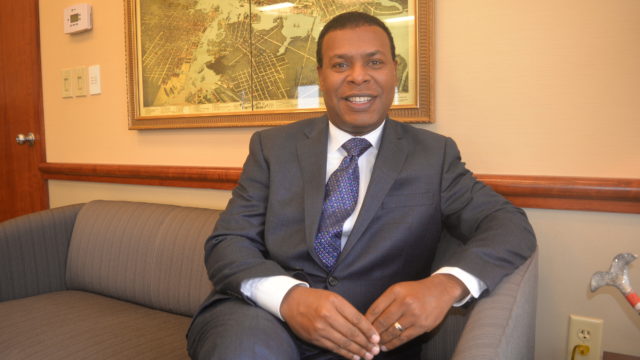By Jeff Maisey
There’s one thing you should know about Kenny Alexander: he intends to make Norfolk a more livable city for all of its citizens. Alexander also plans to meet with each of the 130-plus civic leagues.
Call him the Civic-Minded Mayor.
In May, Kenny Alexander became the city’s first African American mayor, routing the competition in a three-way race.
For some Virginia politicos, Alexander’s effort to seek the position of mayor was strategic in that it would provide him the executive level experience needed to one day convince statewide voters he has the proven credentials in a bid to become governor. Alexander, a funeral home owner by trade, as you may know, has also served as a member of the Virginia House of Delegates (2002-2012, representing the 89th District) and as a member of the State Senate (2012-16, 5th District).
As mayor of the city of Norfolk, Alexander has laid-out an ambitious agenda with goals to understand and solve issues ranging from community policing and climate change to enhancing the arts and connecting unique neighborhoods.
I recently sat down with the mayor to learn more about how he hopes to move Norfolk forward. Here’s what he had to share.
What were your goals for the first 100 days in office as mayor?
The first 100 days was basically getting to know the administration and spending some quality time with the Council members. Although I had been involved either in appointed and elected positions over the last 20 years, I had never served on the Council. Recognizing that I was going to be the first mayor in the history of Norfolk that hadn’t served on City Council I knew it was going to be an adjustment, a transition. I wanted that transition to be seamless for the city. That was my goal. I think we accomplished that without any major hiccups.
I wanted to get around to the various communities and visit some civic leagues to thank people and listen.
What is your overall vision for the city of Norfolk? Is it a continuation of the past? How do you want to make your mark?
I come from a civic and community background. My roots, my training, my work has been in the community through civic engagement and civic participation.
Mayor Fraim had a different approach. His approach was economic development, revitalization with an emphasis on downtown. Because of his efforts of revitalization and renovation there is a lot of enthusiasm for downtown. Six thousand people now live downtown that didn’t live downtown a decade ago. There are a lot of Millennials, a lot of empty-nesters. There are a lot of new businesses, restaurants, hotels. There’s a lot of energy. It’s a destination.
At the same time we have about 130 different communities, civic leagues. A lot of them have felt forgotten or they have not felt engaged; not part of the growth the city has experienced downtown.
My vision is to continue what Mayor Fraim started downtown because it certainly has generated tax revenue, and those revenues are being shared throughout the city. So we need to continue on that path in attracting businesses, especially restaurants, retail, hotels and entertainment. But at the same time recognize the communities around the city are unique and they have character. They should be walkable, bikeable, livable. The quality of life in those communities should be as healthy and vibrant as the quality of life is downtown. That balance is where I want to spend some time over the four years that I’m the mayor.
Are there specific agenda and plans on how you achieve that goal?
One of the things I think we need to recognize is that there’s not a one-size-fits-all. If you look at the character of the communities they are very unique. If you go over to Lafayette-Winona, look at those homes. Look at the architectural style of those homes. I look at trees and the streetscape, the aesthetics. What anchors that community? What’s unique there?
Then you look across at the corner of Lafayette and Tidewater Drive. What is the right retail mix? I know there is a Dollar General, a Tony’s Diner, a little strip mall and a couple of churches. Further down there’s a Food Lion and Ace Hardware as you complete that corridor. However, I still think it is not fully developed where it is walkable, bikeable, and it’s not a meeting place.
I think we need to recognize when you come across the Lafayette bridge and go to Tidewater (Drive) and take a left (turn), how do we anchor and strengthen that community?
You go to ward’s Corner. I purchased at Ward’s Corner, as you know, back in 1998. I opened my business there in ’99. I’ve been a great corporate citizen there; a great friend to the Greek church as well as Temple Israel. Suburban Acres Civic League has held meetings at my business.
I have watched the revitalization of Ward’s Corner, however, how do we connect Ward’s Corner to Southern Shopping Center? How do we complete that where it’s not only anchored by drug stores and grocery stores, but with a mid-size convention center that’s attached to some type of hotel?
When I have guests come to Ward’s Corner for my business, they ask, where’s the nearest hotel? I have to send them either downtown or over to Military Highway or on Hampton Boulevard if they’re navy.
I think it helps complete Southern Shopping Center, Ward’s Corner, and strengthens those neighborhoods, recognizing it is unique; the character of the homes in that community were built in the 1950s and ‘60s. It’s one on the more geriatric communities. There are certain services they’d expect to look for – elder assistance. We need to make sure we have the right recreation and team that is age-appropriate for that established community.
Then you go over to Five Points. As a kid, Five Points was a thriving and vibrant area. It was walkable. A lot of the businesses were supported by people who lived in Five Points. That’s why you don’t have parking on certain streets. There were storefronts and people walked to those stores, and patronized those stores. However, it has become a cut-through – a connector. Is that the new normal that Five Points is just a cut-through to get from Point A to Point B, or do we slow traffic down and put something in the middle of Five Points so that it’s a town square, a community center where people gather?
You want unique experiences throughout Norfolk.
At Bay Oaks we have a park that we started. It’s a great opportunity to have this open space the whole city can enjoy. You have those natural oak trees. As you go further down across to East Beach it’s a whole different world. We need to finish East Beach. It’s a great community. East Beach is beautiful. It has the highest property values in the city, but there are a lot of things they’re still lacking as it relates to retail and grocery experiences. A lot of residents of East Beach have to travel to Hilltop to go to Whole Food. They have to leave their community for certain shopping experiences. As a city we need to figure out how we finish that corridor.
Then we need to attach East Beach to Willoughby. You can’t have different worlds. It’s a waterfront community and we need to figure out what is the best way to attract people to our beaches. We have seven-and-a-half miles of beach at Ocean View and it is underperforming.
What is the right experience to develop that beach to be utilized, not only by the citizens of Norfolk but also to become an attraction for the region and the state?
Norfolk could seek to bring Ocean View Amusement Park back in some form. What do you think of that idea?
Wonderful. Ocean View Amusement Park would be great. The city owns property there. But, again, it is one of the 135 neighborhoods.
If you look at Norfolk, we have the highest paying jobs in the region. Unfortunately, over 100,000 people drive to the city every day to work. I would like for a lot of those people to consider living in Norfolk. If we can assess what people are looking for then we will be able to direct them to one of our unique neighborhoods by talking to them about public schools or private schools.
If they are looking for neighborhoods where there is open space and recreation we have to be able to identify the possibilities.
When you have over 100,000 people driving to your city every day to work and they’re braving the traffic every day to come to Norfolk, my question is, what can I do that would convince you to move to the city of Norfolk? I have 135 unique neighborhoods from French architecture over in Wynona to beach houses out in East Beach. If you want to live in Suburban Acres or Granby we have some unique homes built in the ‘50s. Lochaven has some beautiful Georgian, Victorian houses.
We are not telling our story. We have the highest paying jobs. We have the Port. We have the airport. We have five colleges and universities. We have a research hospital that’s nationally recognized. We have the only free-standing children’s hospital in Virginia, which is King’s Daughters. We have a cruise terminal. We have Amtrak. We have light rail and ferries. And we have the arts. We have the Symphony, the Arts Festival, the Zoo. The list goes on and on. We have world-class museums.
I don’t think we, as a city, have done the best job telling our story and selling our city, not only to the world, but just in the region. The city of Norfolk has something to offer. I’m Norfolk’s biggest fan and cheerleader.
Hopefully, we can improve public schools, improve public safety, and improve our connectivity. That’s why I’m bullish on light rail going to the base, Old Dominion, and the Port. I want to connect people and improve the reliability.
Of course, we have the premium outlet and the possibility of revitalizing Military Circle and the Janaf corridor. I think it makes Norfolk a destination, not just for Hampton Roads, but the East Coast between New York and Florida.
My goal is to make Norfolk the city where people want to come to shop, for entertainment, recreation and relaxation, sporting events, and for conferences and mass meetings. It’s expensive to have something in New York (City). Florida, of course, is busy. So where would you want to come for a mass meeting that has the arts and a little bit of everything for you to enjoy? It’s Norfolk, not Charlotte. If you really look at what we have to offer and be bullish about who we are it is Norfolk. We just need to tell our story.
We also need to improve workforce development and housing. The other big area is flooding. That’s going to be a long, long pull. A tough pull. We’ll get there because we don’t have any other choice. Three feet of water that remains on the streets will devastate our economy and way of life. We have to address flooding and recurrent flooding. Even if some don’t want to embrace climate change in Washington, we see the effects and impact of flooding on our streets. We are living with water.
Over at the Hague and Hampton Boulevard are areas that flood. Olney and Virginia Beach Boulevard is another area that floods. Why? Because they were creeks at one point in time. They were marshlands that previous councils and planners developed over low-lying areas. Now we’re living with the result of that. We’re not going to go back and tear these places down, but we can figure out how to reroute water and traffic. I have some maps in my office that show where those natural waterways were back in the 1800s. We can look today and say, oh, that’s the Chrysler Museum. Or that’s Tidewater Gardens.
Tidewater Gardens is now in the 100-year flood plain and it won’t be here. So let’s address it now. Tidewater Gardens must come down. It gives us not only an opportunity to provide better homes for those individuals but more importantly it gives us an opportunity to allow water to flow back to the water system. Then we can develop around the water.
Those are my thoughts.
You touched on many of the important topics facing our city. On flooding, you’re talking about managing the water as the Dutch do in The Netherlands. Is there a way for Norfolk to embrace the inevitable rising water by turning some of our streets into canals (like Amsterdam), and making the city the epicenter of climate change research and manufacturing?
So, April 2017, the city of Norfolk in partnership with NATO is going to host an international resiliency conference. Old Dominion, who has the center on resiliency, will present and be a participant.
Norfolk has an opportunity to lead the nation and be very instrumental on the global scene as it relates to how to manage water, live with water, capture water, and then return it to the sea.
You’ll see Norfolk talking more about new construction with rain gardens where you could help absorb water. You will see Norfolk talk about raising some of our roads and built overpasses instead of underpasses.
Back to what you stated earlier, to have canals that could not only be used for water but as a mode of transportation – water taxis.
We have to figure out how to live with water as the Dutch did.
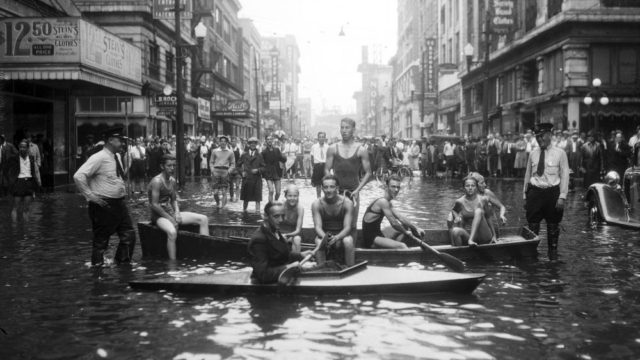
(Norfolk has a history of flooding. Mayor Alexander hopes a conference on resiliency will shed a light on ways the city can manage the water. Pictured: Norfolk Granby Street in 1933)
It could be aesthetically pleasing with retention ponds. We take down Tidewater Gardens and that will give us a chance to create a very large open space for gathering – a city center that’s open with the right drainage system.
At the same time we are sinking because of the crater out in the Chesapeake (Bay). We have to figure out how to deal with that. Some scientists believe if you pump water under a rock you’ll lift it back up. That kind of innovation; we’re going to study all of that.
We’ll be developing with an eye on resiliency and building contingencies. Norfolk is the second city with the type of sea level rise that concerns city planners and those in Washington. Norfolk and New Orleans have water that is rising at a much faster pace than any other cities in the United States. It concerns us.
Our long term goal as we do future planning is looking at those areas that flood. Part of it will be canals and having some elevations of buildings and roads.
We have to also plant more green space. We can’t pave our way to resiliency.
I look forward to Norfolk become this national accelerator for learning and exploration with Old Dominion and NATO.
The performing and visual arts are important not only for the quality of life but also in driving tourism. Norfolk, by many, is viewed as the cultural capital of Hampton Roads. The arts groups in Norfolk receive a lot of city funding. What is your view of continuing the current level funding for the arts?
I would like to see greater collaboration. I know we have a commission for the arts, but as it relates to coordinating with Visit Norfolk, the Downtown Norfolk Council, Festevents, the Symphony, Opera, the Virginia Arts Festival, and even our college and university arts departments and Governor’s School, I would like to have a better coordination and collaboration of the arts so we can really capitalize on those who come.
For some events and performances, 70 percent of the people who attend come from out of the area. And we have seasons of the arts.
Norfolk has the ability to have a continuation all year of performances, festivals and shows. We have all of these venues. If we just go from one season into the next we will be able to have multiple stages.
I go to New Orleans and New York. One thing I love about going to these cities – or Washington, DC – if I went to one show or performance and didn’t like it, I’d just go across the street because there are so many things going on.
Those of us who love the arts and attend the arts we tend to make a day of it. We go to eat. We’ll invite some friends over. We go to the show. We go out afterwards. It’s just a great time.
What if we had something like this that started on Thursday through Sunday? That there are different offerings. If the Opera is in; the Symphony has something going on; Chrysler is open; Festevents has something going on. So you move around the city be it from classical to jazz to ballet to theater to the spoken word…
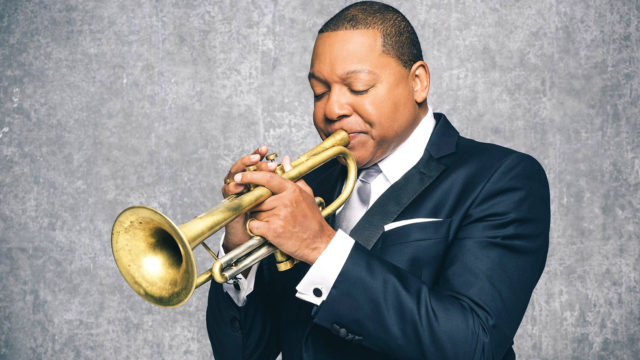
(The arts are important to Mayor Alexander, including the Virginia Arts Festival, which will bring jazz great Wynton Marsalis to Chrysler Hall in May 2017)
Again, if I want to go to New York I know what I’m going to confront with traffic and price. Washington may not be on the same scale as New York, but I will be able to find something. Atlanta? Yeah, maybe. But there’s nowhere else on the East Coast.
As mayor, I would like to figure out how we can make Norfolk known throughout the world as an arts center. That I can fly into Norfolk on a Thursday and there’s a show at Chrysler Hall, the Harrison Opera House is open, the Virginia Stage Company’s in play, the Symphony, small stages and venues. So we are embracing you artists to come and start their craft and profession and grow it in Norfolk by having a standup or solo act at restaurants, hotels. That Norfolk becomes a city where artists can actually make a living and not struggle.
Norfolk has had a number of issues related to police shootings of unarmed men. We have a new police chief in place. What improvements do you see being made in this realm?
Two things. We have to recognize that after 9/11 most police departments around the country changed their focus from community policing to more of a semi-paramilitarized police force. Their training, tactics, response; the equipment that they purchase, was all geared towards terrorism. Every call that they responded to they responded with the training they received. And that was after 9/11 and rightfully so. It was a horrific attack on our country. We all came together as a country. And police departments purchased this equipment. They moved away from police assisted community enforcement (PACE) and into tanks, helmets, vests. We’ve seen it in some of the standoffs and hostage situations.
We saw a decrease in the number of officers that were being trained in crisis intervention and how to deescalate a hostile situation.
What I recognize is that we have to have both. The reason we need a SWAT team or Technical Response team and have some of our police officers in a unit trained as it relates to terrorist attacks is because we have the largest naval base in the world, the only NATO presence outside of Brussels, the second deepest port on the East Coast, cruise terminals, a large maritime industry, and five major shipyards. Norfolk is on the international map as a target for terrorists. So you have to have that response. So I would not decrease that.
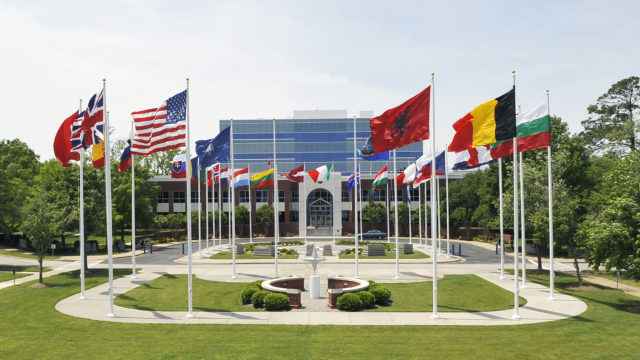
(Part of what makes Norfolk a unique international city is that NATO’s only North American headquarters is located there )
One of the things I hope we can accomplish with Chief Goldsmith becoming a deputy city manager with an emphasis on public safety is that he will continue to work with Naval Station Norfolk, NATO, the Port, and other federal and military installations as well as our hospitals.
On the eve of the (presidential) election there were three states mentioned as possible terrorist targets: Virginia, New York and Washington, DC. So if you drill down to where, in Virginia, there are only two places, maybe. So I need that military response.
At the same time I want Chief Boone to go back to his roots, which is community policing, civic engagement, crisis intervention, deescalating domestic situations.
If you look at all of the crimes, murders and shootings in Norfolk most of them were committed by an acquaintance. Some of them go unsolved. Why? Because our children and young people are getting involved with people they don’t even know. It’s just a brief acquaintance; a drug deal gone bad. Or I want to buy something that’s hot; we meet on social media; it goes bad. I don’t buy it, I take it from you. We need to understand this behavior. It’s not domestic. It’s a brief acquaintance or a stranger. That’s the reason we had so many homicides in 2015 go unsolved and without an arrest.
People aren’t talking. We don’t have the contacts in the community anymore. On the campaign trail a lot of people told me they just don’t trust the police. They don’t know them. So how do we change that paradigm?
Would you be in favor of disarming the beat cops patrolling the neighborhoods and having highly trained rapid reaction units ready to respond if radioed-in as the situation required such a force?
I will support the police keeping their weapon and I will support any citizen who has a legal weapon. I’m a permit holder. Again, after 9/11 we moved away from community policing and towards a paramilitarized mentality.
Remember over at Old Dominion you had a person who lived near the university who came outside and brandished a weapon. He went back in the house. Nobody was shot or injured. You look at our (Norfolk’s) response. We had a tank. We had a police force with the long rifles in a school zone. It was a solid neighborhood. We had identified the person as a professional and a veteran. He was having some behavioral, mental health issues.
Not that I get involved in the operations, but the city manager did call me.
I said, “Mr. Manager, dial back. There are no injuries. We’ve identified he’s a veteran. Pull the (electric) meter. Cut the water off. We don’t want to throw a bomb in and rush in. Let’s dial back. Don’t send in food. You’ve got the place surrounded. Just give it some time.”
Since I’ve been the mayor the three or four hostage situations or barricades that we’ve had have all ended peacefully. That’s returning to community policing.
City Manager Marcus Jones has moved on to Charlotte, North Carolina for a position. What are you and council members looking for in a new city manager?
First of all, someone who understands the finances – our assets, liabilities and the services we provide and how we pay for them. We are very constrained. We are the 12th or 13th most fiscally constrained city in Virginia. The reason is we have about 39 percent of property that’s not taxed because of the military, the Port, schools, public housing, museums and cultural centers.
The number one source of revenue for our city is real estate taxes.
So we have to understand what our constraints are so we can invest and spend wisely. So we need to understand what it takes to keep us in the black.
Marcus, of course, repeatedly got high praises when he and his team went up to New York to talk with the bond rating agencies. They all gave Norfolk high marks for the ability to do so much with a constraint.
The second thing is he or she should be a person who listens to Council, not just the mayor. We’re not a Mayor/Council form of government, we’re a Council/Manager form of government so the manager has to understand that he or she does not only take orders from the mayor. I have seven colleagues. My vote is not weighted. We all are equal. However, my council has given me latitude to work closely with our appointees be it the manager, clerk, auditor. The Council understands you can’t have eight people talking.
The third and final thing is a person who understands we have 5,000 employees and that person runs the day-to-day operations of our city. To run the city like a business, and every citizen – 250,000 people – are stakeholders in this city. The Council is the board of directors.
Out of 1.7 million people that call Hampton Roads home, Norfolk is the downtown. I don’t care where you go in Hampton Roads, when you mention going downtown it’s Norfolk. We have an awesome responsibility to the region to provide regional leadership and regional stability. We’re not like any other city because of our diversity and assets. I don’t know where else you can go in Hampton Roads and hear 100 different languages spoken. You have 28 countries represented at NATO, not counting the partner countries. We are an international city. We can’t behave like other cities.

